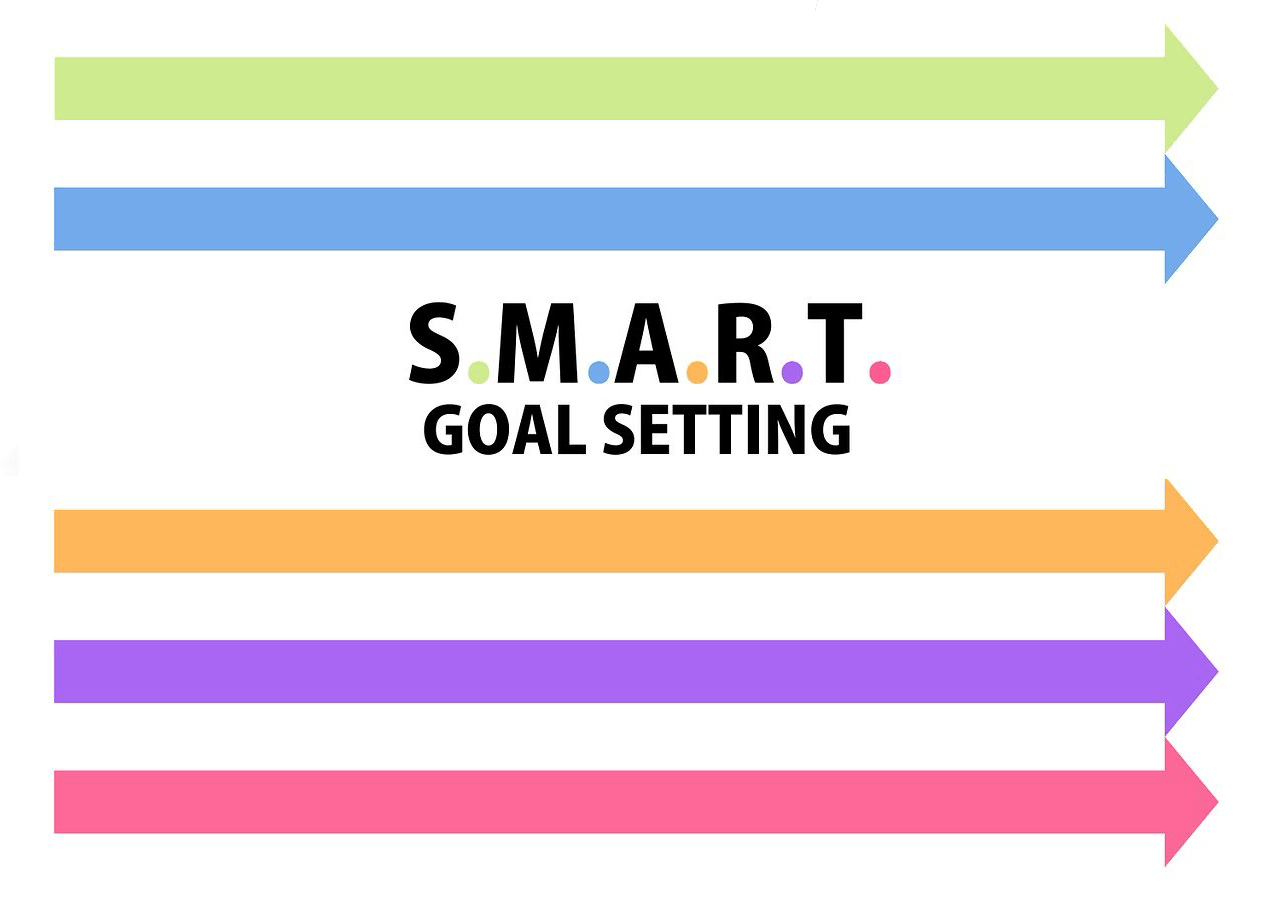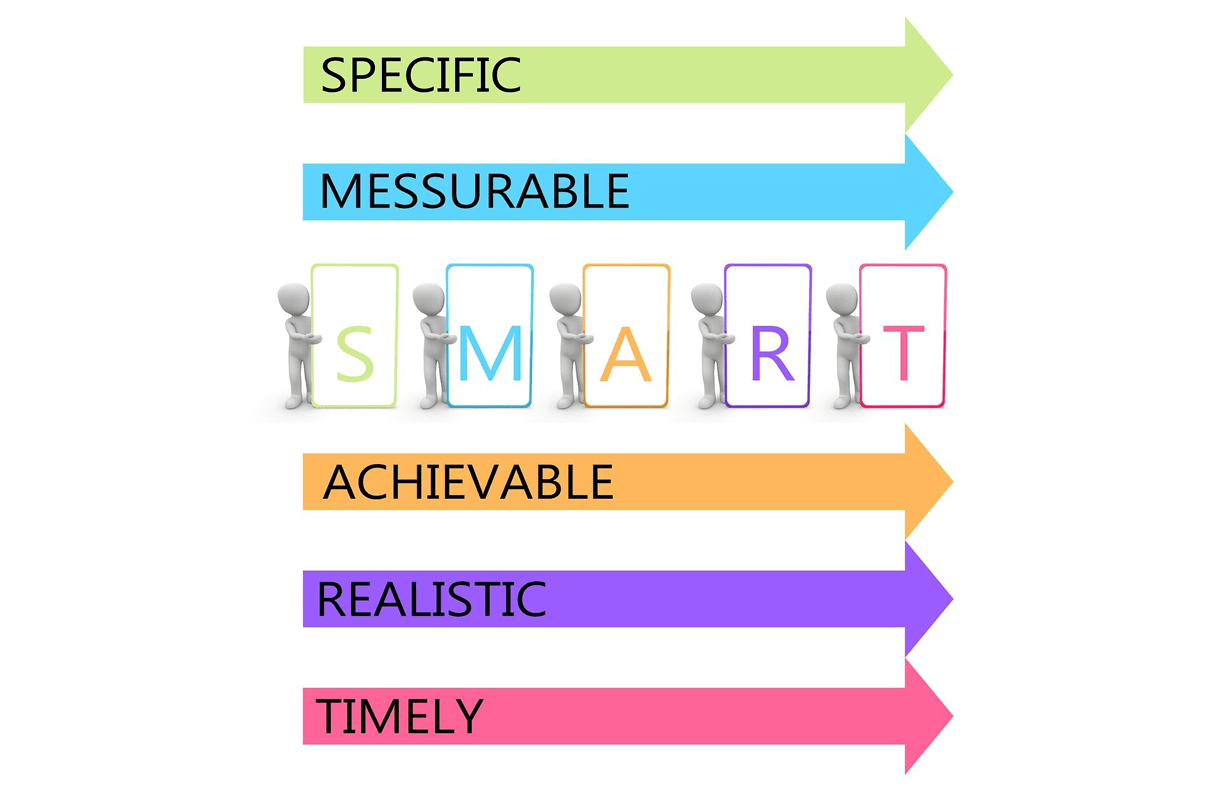SMART guidelines for goal setting are key aspects of project approach.
It happens, however, that these guidelines are, in some cases, set aside for the sake of extemporaneousness of the project itself or an alleged clarity of shared objectives.
The result is a vicious circle: unclear objectives lengthen and undermine the project results.
CONTENT
When objectives are set, specificity is crucial: for example, challenging yourself to “do more work” is too vague, because in this way you cannot monitor progress and the point of arrival.
In short, if objectives are not measurable, achieving success can become challenging.
SMART objectives are therefore the answer, since they can be split into five measurable factors.
Although progress in personal or working life is possible even without setting objectives, surely the application of the SMART system brings more chances of success.
What are SMART objectives?
SMART objectives are a fairly new idea: in 1981, George T. Doran, a consultant and former business planning director at Washington Water Power Company, published a paper introducing SMART objectives.
T. Doran describes G. T. Doran describes SMART objectives as a tool to create criteria and help improve one’s chances of achieving a goal.
SMART is the acronym used to guide the definition of objectives and in detail means as a tool to create criteria and help improve one’s chances of achieving a goal.
SMART is the acronym used to guide the definition of objectives and in detail means:
- Specific (simple, reasonable, relevant).
- Measurable (relevant, motivational).
- Achievable (agreed).
- Realistic (reasonable, resourceful, result-based).
- Time-bound (based on time, limited in time / cost).
S – Specific
When setting a goal, you have to be specific about what you want to achieve.
This is not a thorough list of how you will achieve a goal, but should include an answer to the popular “5 w” questions:
- Who: You must consider who needs to be involved in order to achieve the goal. This is particularly important when working on a team project.
- What: You think about exactly what you are trying to achieve and list the important factors and aspects.
- Where: This question may not always be applicable, however, if the project is about a specific place or event, it must be specified here.
- When: You will go down to the details of this question in the “time-bound” section of the SMART objectives definition.
- Why: It simply answers the question “what is the reason for the goal?”
The more information you can get, the better the results will be and the easier it will be to achieve your objectives because the definition of the path to follow will be clearer.
M – Measurable
What metrics will be used to establish whether the objective is achieved successfully or not?
This makes a goal more tangible and practical because it provides a way and numbers to measure progress.
If the project takes several months to be completed, the advice is to set some milestones taking into account specific activities to be conducted.
The more quantitative data you have, the more control you can have over your progress.
A – Achievable
This step focuses on how to achieve the goal and if you have the right tools and skills.
Sometimes the team does not possess the required resources. If this is the case, you will need to consider how to get them or if there are alternative methods to achieve the goal while not having the required tools and skills.
So, to prevent unpleasant surprises and to make a goal achievable, a prior analysis of what you can actually do to achieve the goal is necessary.
R – Realistic
In order to define relevant and realistic goals, you need to quantify the extent of your potential and those who are associated in the organization.
This refers to focusing on something that makes sense with the broader business goals, then to marketing goals and/or business strategies.
For example, if the goal is to launch a new product, it should be something that is in line with the overall business goals.
The project team might also be able to launch a new consumer product, but if the company is in B2B and does not plan to expand into the consumer market, the objective would not be relevant.
T – Time-bound
Anyone can set goals, but if realistic timing is missing, it is likely that the project will not achieve the goal successfully.
The key is to ask specific questions about when the goal is to be achieved and what can be achieved within a given time frame.
If the project spans a long period of time, it is beneficial to break it down into mini-goals or milestones. Providing time constraints thus creates a sense of urgency.
SMART objective system benefits
The concept of SMART objective setting performs well not only within business, but also in private life because it provides a clear framework for achieving objectives.
Here are the main advantages of SMART objectives:
Provide directions
Implementing SMART objectives, you get a clear business direction that can guide your team in making everyday decisions.
Help with planning
When you achieve success in setting SMART goals, you gain an advanced level of planning of project activities and everyday issues.
Faster results
SMART objectives help you carry out activities faster and with less strain because less time will be wasted on non-productive actions.
Motivational tool
Strong business objectives can become a tool to motivate team members. For example, if the goal is to increase sales, you can implement incentive programs related to achieving certain goals.
To recap everything in a very short and very meaningful sentence:
working without objectives is like sailing without a compass.
It’s like being on the vast open sea when you don’t know what to do, on what resources to count on, let alone the direction to take.
The same happens with organizational objectives: people, groups and systems need clear, structured and well-defined objectives.
The SMART formula is therefore a powerful tool that provides transparency, attention and motivation to achieve all the objectives.
SMART objectives are also easy to implement and do not require specific tools or training.
Some people believe that the SMART method isn’t suitable for long-term goals because it lacks flexibility, while others suggest that it may stifle creativity, but regardless of different points of view, specific and measured goals are the key to success.




